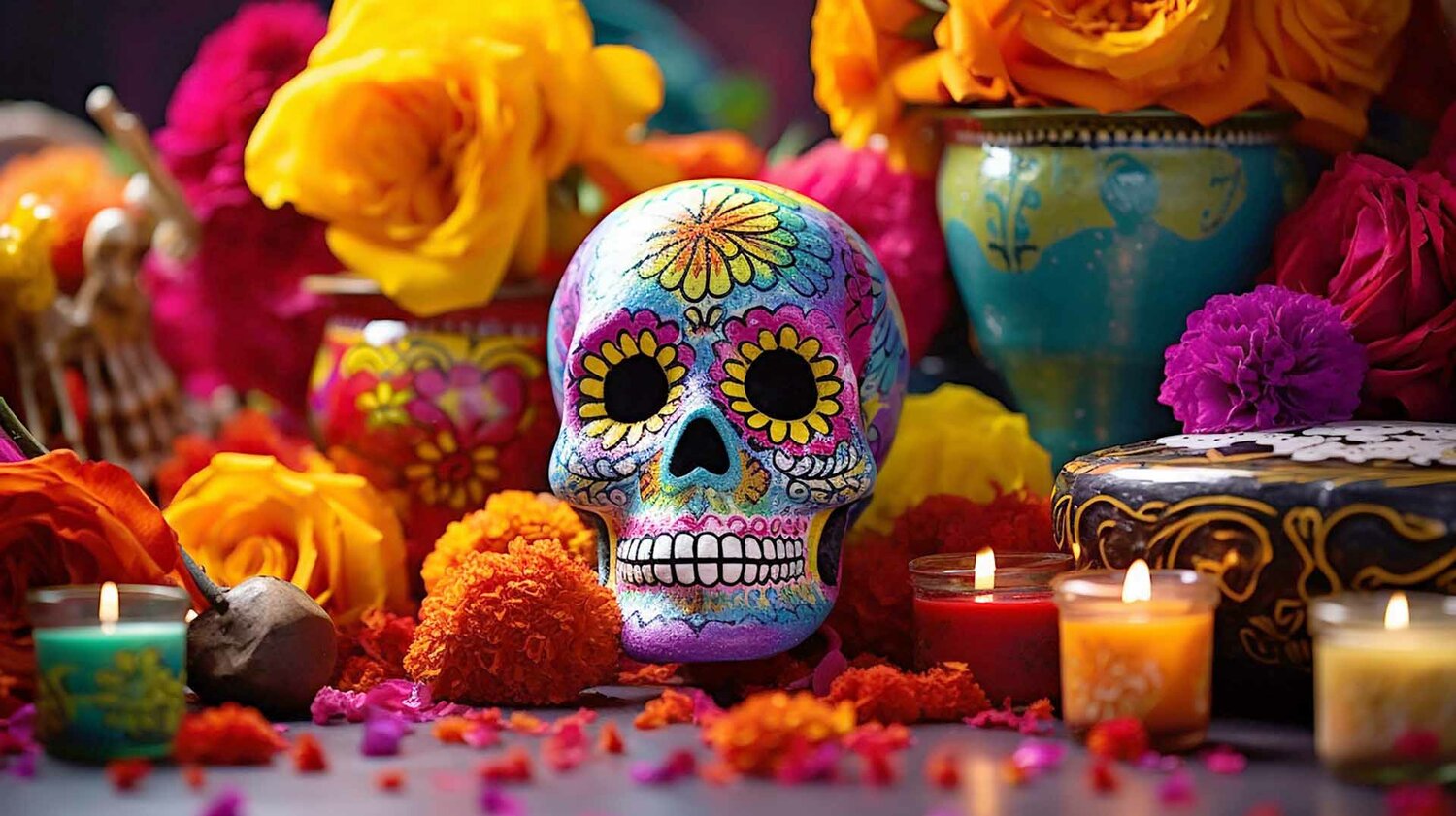Celebrate Día de los Muertos, Nov. 1 & 2
Community prepares for sacred Mexican event
As the weather cools and leaves transform into vibrant hues, my heart fills with warmth knowing that Día de los Muertos, one of the most significant celebrations for Mexican indigenous people, is just around the corner. This beautiful holiday, celebrated on November 1st and 2nd, has its preparations beginning weeks in advance. Many of us start setting up altars and gathering ingredients to make pan de muerto—a delightful sweet bread shaped like a bun and adorned with bone-shaped decorations. Its signature flavor, infused with orange zest, is a seasonal baked item typically enjoyed only during this time.
In recent years, Día de los Muertos has gained popularity, and I believe three main factors contribute to this: the impact of COVID-19, the influence of Disney Pixar, and a growing desire for cultural identity. Many individuals are reconnecting with their roots, and celebrating this holiday offers a meaningful way to do so. Additionally, the pandemic forced many to grapple with grief, often without the opportunity to say goodbye to loved ones. This holiday can serve as a powerful way to process that loss.
However, commercialization has transformed this sacred celebration. The animated film "Coco," which won the Academy Award for Best Animated Feature in 2018, played a significant role in bringing this holiday into the mainstream. Now, retailers like Starbucks, Target, and Walmart are capitalizing on its popularity. You can find clothing, decorations, and even sugar skulls everywhere. Unfortunately, due to its proximity to Halloween, many people confuse it with that day, which it has nothing to do with that.
People often ask me if if those without Mexican heritage can celebrate Día de los Muertos. This question is complex. While not every Mexican family observes the holiday, it has deep indigenous roots, tracing back to pre-Columbian Mesoamerica. When colonizers arrived, the date was aligned with All Saints' Day and All Souls' Day on November 1st and 2nd, respectively. When my family first came to the United States, finding pan de muerto was a challenge, with the closest option being in La Villita, Chicago’s Mexican community. I'm grateful that my niece and younger siblings can see their culture represented in stores today. Yet, I question whether the wealth generated from this commercialization is being redistributed back to indigenous communities and whether these products are created by indigenous people themselves.
If you want to honor your ancestors and participate in Día de los Muertos, it’s essential to understand its profound spiritual significance. While "Coco" beautifully showcases elements like cempasúchil (marigold) flowers, sugar skulls, and papel picado, this holiday goes beyond mere decorations. It serves as a reminder of our connection to the land and our ancestors, our view on death, and it invites us to reflect on the legacy we want to leave behind. What kind of ancestor do you aspire to be?
Supporting local businesses is a meaningful way to engage with the holiday. Seek out our local bakery La Panaderia Acapulco for authentic pan de muerto instead of purchasing from chain stores. Invite people over to your house for some quality time eating pan de muerto and sharing stories of loved ones that have passed. You can honor your ancestors in many ways without appropriating a holiday.
Another poignant connection to Día de los Muertos is the migration of monarch butterflies. As these butterflies return to Mexico around this time, they are believed to carry the spirits of our ancestors visiting us. Unfortunately, their populations have declined significantly in recent years. According to the Iowa Butterfly Survey Network, the cabbage white butterfly population has decreased by about 60% from 2021 to 2023. Caring for our environment is a collective responsibility. Instead of hastily celebrating a holiday you may not fully understand, consider planting milkweed to support these butterflies. When they return, you can feel the joy of knowing they are your ancestors coming back to visit you.
Comments

